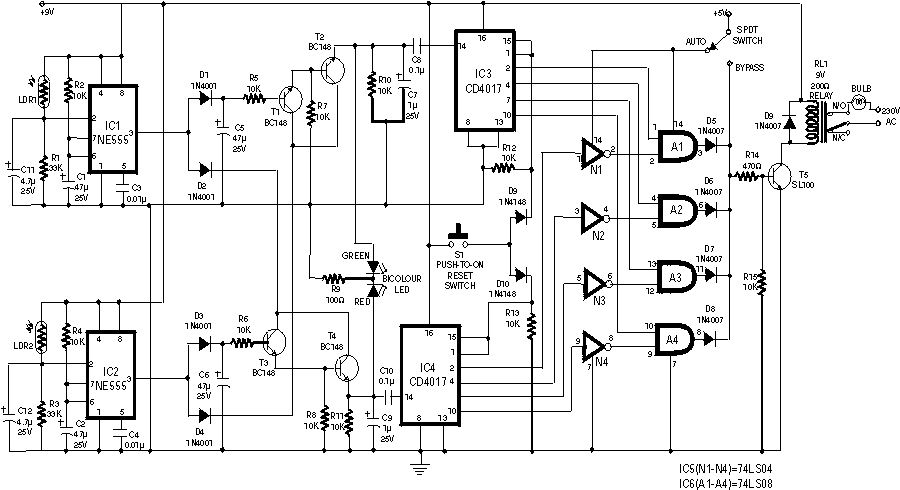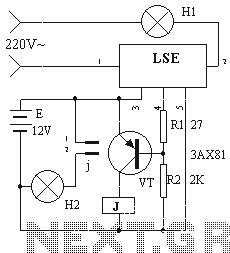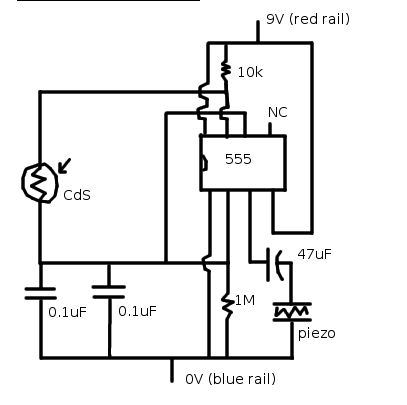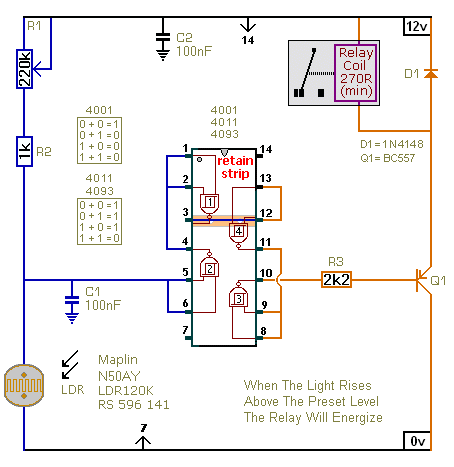
Car Interior Light Extender
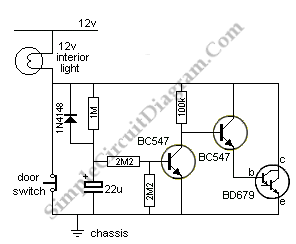
This is a Courtesy Light Extender for vehicles. It extends the ON time of the interior lights when a door is closed, allowing passengers to see where they are seated.
The Courtesy Light Extender circuit is designed to enhance the functionality of a vehicle's interior lighting system. The primary purpose of this circuit is to ensure that the courtesy lights remain illuminated for a specified duration after a door is closed. This feature is particularly useful for passengers who may need additional illumination to find their seats or to locate personal items in low-light conditions.
The circuit typically consists of a microcontroller or a timer IC that monitors the door switch status. When the door is closed, the circuit activates the interior lights, and the timer starts counting down a predetermined time interval. Once the time elapses, the circuit automatically turns off the lights, conserving battery power and preventing unnecessary drain.
The design may incorporate additional components such as a relay or a transistor to handle the current required by the lights, ensuring that the microcontroller operates within its safe limits. A capacitor may also be included to smooth out any voltage fluctuations and provide stable operation.
For enhanced user experience, the circuit can be configured to include adjustable timing settings, allowing users to customize the duration of the light activation according to their preferences. Furthermore, the circuit can be designed to integrate with other vehicle systems, such as door sensors or central locking mechanisms, for improved functionality and safety.
In summary, the Courtesy Light Extender circuit serves a crucial role in vehicle interior lighting systems, providing convenience and safety for passengers while maintaining energy efficiency.Below is a Courtesy Light Extender for cars. When a door is closed in a car, it extends the ON time, so the passenger can see where he/she is sitting. Here is.. 🔗 External reference
The Courtesy Light Extender circuit is designed to enhance the functionality of a vehicle's interior lighting system. The primary purpose of this circuit is to ensure that the courtesy lights remain illuminated for a specified duration after a door is closed. This feature is particularly useful for passengers who may need additional illumination to find their seats or to locate personal items in low-light conditions.
The circuit typically consists of a microcontroller or a timer IC that monitors the door switch status. When the door is closed, the circuit activates the interior lights, and the timer starts counting down a predetermined time interval. Once the time elapses, the circuit automatically turns off the lights, conserving battery power and preventing unnecessary drain.
The design may incorporate additional components such as a relay or a transistor to handle the current required by the lights, ensuring that the microcontroller operates within its safe limits. A capacitor may also be included to smooth out any voltage fluctuations and provide stable operation.
For enhanced user experience, the circuit can be configured to include adjustable timing settings, allowing users to customize the duration of the light activation according to their preferences. Furthermore, the circuit can be designed to integrate with other vehicle systems, such as door sensors or central locking mechanisms, for improved functionality and safety.
In summary, the Courtesy Light Extender circuit serves a crucial role in vehicle interior lighting systems, providing convenience and safety for passengers while maintaining energy efficiency.Below is a Courtesy Light Extender for cars. When a door is closed in a car, it extends the ON time, so the passenger can see where he/she is sitting. Here is.. 🔗 External reference
